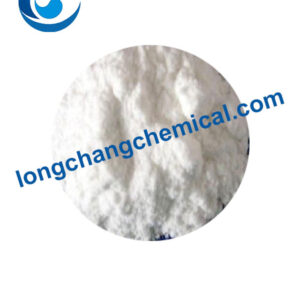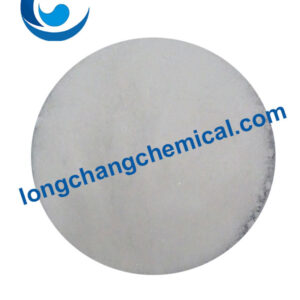Description
Beta-Nicotinamide Mononucleotidequick Details
Chemical Name: Beta-Nicotinamide Mononucleotide
CAS No.: 1094-61-7
Molecular Formula: C11H15N2O8P
Beta-Nicotinamide MononucleotideStructure:
Molecular weight: 334.22
Appearance: White powder
Assay:97%~100.0%
Beta-Nicotinamide Mononucleotidetypical Properties
| Item | Specifications |
| Appearance | White powder |
| Appearance of solution (5% w/v in water) | Colorless to pale yellow and clear |
| Water | ≤6% |
| Arsenic | ≤1 ppm |
| Heavy metals | ≤10 ppm |
| Assay | 97%~100.0% |
Beta-Nicotinamide MononucleotideUsage
Anti-aging Research, Anti-aging Health Products Raw Materials
Beta-Nicotinamide MononucleotidePackaging and Shipping
Packing: 25kg / Cardboard bucket
Delivery: Non-dangerous cargo
Beta-Nicotinamide MononucleotideStorage
Store in dry, ventilated areas to avoid direct sunlight.
Contact Us Now!
If you need price, please fill in your contact information in the form below, we will usually contact you within 24 hours. You could also email me info@longchangchemical.com during working hours ( 8:30 am to 6:00 pm UTC+8 Mon.~Sat. ) or use the website live chat to get prompt reply.
Ischemic cerebrovascular disease includes two types of transient cerebral ischemia and cerebral infarction. Among them, cerebral infarction is named ischemia stroke (IS) in Chinese medicine diagnostics, which is a series of neurological dysfunctions due to various reasons of local blood supply obstacles in brain tissue areas, resulting in ischemic and hypoxic necrosis of brain tissue. Its lethality and disability rate are high and the pathological mechanism is complex, causing a great economic burden to the world every year. Oxygen glucose deprivation (OGD) is the most commonly used in vitro model of IS and is widely used in basic and preclinical stroke research.
Cellular autophagy (autophagy) is widely present in eukaryotic cells and plays an important role in the regulation of cell survival and death. A large number of studies have suggested that autophagy is closely related to the occurrence and development of IS. Some studies have shown that neuronal autophagy attenuates ischemic brain injury, while others have reported that neuronal autophagy exacerbates ischemic brain injury, but the specific mechanism is not clear.
β-nicotinamide mononucleotide (NMN) is present in a wide variety of foods, and it is essential for regulating cellular senescence and maintaining normal function of the organism, and is involved in the transduction of many important intracellular signalling pathways. It has been reported that in vitro administration of NMN rapidly converts NAD+ to NAD+ and regulates cellular senescence and maintains normal body functions.NMN can compensate for the reduction of NAD+ caused by IS and ameliorate the damage of cerebral ischemic neurons. This suggests that NMN plays a role in IS. Some studies have shown that NMN can promote neurovascular regeneration, improve cerebral microvascular endothelial function, anti-inflammation and anti-apoptosis. There are also a few studies suggesting that it can play an anti-ischemic brain injury role by regulating autophagy, however, the specific mechanism by which NMN regulates autophagy against IS is not clear.
The aim of this study was to construct an oxygen sugar deprivation PC12 cell model, and measure the cell survival rate by MTT in vitro, detect autophagosomes and autophagolysosomes by transmission electron microscopy, observe the fluorescence intensity of autophagosomes by MDC, and detect the expression of LC3-II/LC3-I, Beclin1, p62, and P-mTOR/mTOR autophagy-related proteins by Western blot, in order to clarify the effect of NMN on OGD-induced autophagy damage in PC12 cells.
The 2017 Lancet study showed that stroke is the major disease causing years of life lost in China, with rapid progression, high lethality and disability. Of these, IS accounts for 60 to 70 per cent of overall strokes, and IS is caused by a reduction in blood supply to an area of the brain due to a blockage in a blood vessel. Ischemia and hypoxia in brain tissue trigger a series of pathophysiological responses such as cell autophagy, apoptosis, oxidative stress, intracellular calcium overload, etc. IS survivors have a long recovery cycle, increasing the global economic burden. Currently, there are many contraindications for drugs used against IS in the market. Therefore, it is necessary to continuously explore drugs to prevent and treat IS. OGD is a classic model for in vitro study of IS, and PC12 cell line is one of the most commonly used cell lines to study neuronal injury, which is often used in the study of ischemia-hypoxia injury. Therefore, the OGD PC12 cell model was used in this experiment for the in vitro study.
NMN is a naturally occurring substance in the human body and in many foods, with a molecular weight of 334.22. It is a product of the nicotinamide-phosphate ribosyltransferase reaction and one of the key precursors of NAD+. Some studies have found that by regulating the level of NMN in organisms, it has a better therapeutic and restorative effect on cardiovascular and cerebrovascular diseases, neurodegenerative diseases and degenerative diseases of aging. It has also been reported that the administration of NMN can reduce the infarct area and neurological function damage in rat MCAO model. In this experiment, it was demonstrated by MTT that OGD could reduce the survival rate of PC12 cells, and NMN at concentrations of 400, 800, and 1600 μmol/L increased the survival rate of OGD PC12 cells, with the highest survival rate at the concentration of 800 μmol/L; whereas, there was no significant difference in the cell survival rate at the concentrations of 200 and 3200 μmol/L of NMN, which suggests that the 200 μmol/L concentration of NMN can increase the survival rate of PC12 cells. This suggests that the 200 μmol/L concentration is not yet an effective concentration to increase the survival rate of OGD-induced PC12 cells, while the 3200 μmol/L concentration may be too high and may cause some damage to the cells themselves.
Cellular autophagy, known as type II programmed cell death, is a process in which cells use lysosomes to degrade their own damaged, denatured or senescent macromolecules as well as organelles under the regulation of autophagy-related genes in order to maintain their survival, differentiation, growth and stability. The study table shows that autophagy is induced after IS, and at the same time, autophagy also accompanies the development of IS pathological process, playing different regulatory roles in the four phases of IS, namely, acute, subacute, recovery, and sequela phases.
mTOR is an atypical serine/threonine protein kinase with a relative molecular mass of 289 kDa. its different proteins bind to form 2 different complexes, mTORCl and mTORC2. mTORCl is sensitive to rapamycin and is responsible for the integration of growth factors and nutrient signals, and mainly regulates cellular autophagy, ribosome biogenesis, protein translation and lipid synthesis. mTORT is considered to be the valve of autophagy. Studies have shown that phosphorylated mTOR can attenuate oxygen sugar deprivation injury and play a role in protecting cells. 3-MA is a commonly used inhibitor of autophagy. rAPA is an mTOR inhibitor that induces the onset of autophagy by inhibiting mTORC1, and it is also called as an autophagy activator. In this experiment, the 3-MA and RAPA group was set up to intervene in the regulation of OGD-induced autophagy in PC12 cells, and the 3-MA, RAPA and drug combination group was also set up to observe whether NMN could counteract the effects of 3-MA or RAPA on OGD-induced autophagy in PC12 cells.
The levels of Beclin-1, LC3 and p62 proteins can be used as important detectors of the role of autophagy.Beclin1 is a well-established regulator of autophagy and is positively correlated with autophagy.Beclin1 interacts with proteins such as VPS15, VPS34, and ATG14 to carry out the functions of autophagy and membrane transport.LC3, a homologue of ATG8, a ubiquitin-like modifier in yeast, is LC3 is a homologue of the ubiquitin-like modifier ATG8 in yeast and is thought to play a role in autophagy. LC3 loses its C-terminal residue after treatment with ATG4 and is converted to LC3-I. LC3-I undergoes a cascade of ubiquitination-like enzymatic reactions, covalently linking to the lipid molecule phosphatidylethanolamine in the autophagosome membrane, and is converted to LC3-II, and an increase in the ratio of LC3-II to LC3-I is indicative of elevated levels of autophagy. p62 is a marker protein that reflects autophagic activity, and its protein levels correlate with the level of autophagy. p62 is a marker protein for autophagy activity, and its protein level is negatively correlated with autophagy, i.e., when autophagy occurs, p62 protein is degraded in the cytoplasm; when autophagy activity is weakened and autophagy function is defective, p62 protein will accumulate in the cytoplasm. In this experiment, it was confirmed by Western blot that NMN could down-regulate the relative expression of Beclin1 and LC3-II/LC3-I proteins, and up-regulate the expression of P-mTOR/mTOR and p62 proteins. In addition, transmission electron microscopy and MDC method were also applied to confirm that NMN could reduce the number of autophagic vesicles, autophagic lysosomes, and fluorescence spots and intensity in OGD PC12 cells. The above indicates that NMN can inhibit OGD-induced autophagy in PC12 cells.
In conclusion, it is suggested that a certain dose of NMN can resist OGD-induced autophagy damage in PC12 cells, thus exerting a cytoprotective effect, and this protective effect may be related to the mTOR-related pathway. The present study may provide a certain target reference for NMN to prevent OGD-induced cellular autophagy damage, and accumulate certain laboratory data for the development of the natural compound NMN.






Reviews
There are no reviews yet.